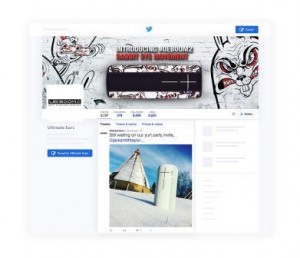
When working in the field, we all make a few conversion rate optimization mistakes. It’s what we learn from these mistakes that determine whether we will flourish or fail. Below are 10 ½ CRO mistakes that I’m sure we’ve all made at one point or another in our testing lives!
1. No Evaluation of Visitor Intent or Type of Audience
One of the worst CRO mistakes that we can make when setting up testing is not evaluating the types of visitors that arrive to our website. Learning how to evaluate visitors helps us understand where they are in the purchase funnel and what their needs are. We have to anticipate what the visitor’s frame of mind is at different points so we can meet those needs. In search marketing, for example, evaluating the types of keywords used when visitors find your site could help you direct them to the right landing page. A very broad keyword that leads to a very specific landing page could prevent the visitor from continuing their research phase.
Demographics are also important. For instance, are your products or services focused on different ages or geographical regions? The internet blurs the lines between traditional demographic regions. You may want to consider stretching the regions to see if you can catch some edge cases. If you advertise locally, you might want to stretch the geographical region that you advertise you in wider circles to see just how far you can reach while still maintaining good ROI on your business.
2. No Evaluation of the Source Where Traffic is Arriving From
The second mistake is not evaluating your traffic sources. When a visitor comes to your site, they will have a particular intent in mind. Your traffic sources can tell you quite a lot about what the intent of the visitor is and how we can match their thoughts to their landing page experience.
 Montana Instagram Demonstration – CRO Mistakes
Montana Instagram Demonstration – CRO Mistakes
Take a look at this Instagram ad. It’s advertising Montana tourism. The messaging clearly states there’s a “#MontanaMoment waiting for you.” If you click the Learn More button, this is the page you’re presented with:
 CRO Mistakes – Montana Landing Page
CRO Mistakes – Montana Landing Page
While we can tell that this is a Montana-focused landing page, there is a bit of an incongruity. There’s no mention of a #MontanaMoment. Instead, the advertising slogan is “It’s time.” While there is a link due to the use of time-related language (moment, time, and “day in and day out” in the Instagram ad), and the fact that both pages are mentioning Montana, the landing page could be made stronger through greater congruence between the two pages. Having congruency between different steps of the purchase funnel helps increase engagement and conversions.
Another way to look at sources is by device or browser type. Of course, mobile is a hot topic of late. More and more people are using mobile to access the internet, and the habits they use on a mobile device are different from traditional desktop or laptop usage. Many people switch between the two often. They could do their research on a mobile device and then do the actual conversion when they’re at home on their desktop. Learning to track the sources of different audience behavior patterns and adjust the UX accordingly will strengthen your brand and improve performance.
3. Determination of Page Issues that Violate UX
Our next in the series of CRO mistakes is not taking into account page issues which cause a poor user overall user experience. There are two main types of page issues. There are issues that will cause problems for all users. These are things like 404 error pages, broken links and images, bad redirects, and other basic problems. These should be forwarded to the development team immediately for resolution.
There are other kinds of UX errors which are more in the marketer’s wheelhouse. These types of errors happen when a user lands on a page. If a user finds a page is difficult to navigate, or aren’t immediately aware of the next step in the purchase funnel, or otherwise can’t find the information that they’re seeking that caused them to click in the first place, they’ll bounce away. In these cases, testing is the way to go to figure out what works and what doesn’t.
 Activity Diagram – CRO Mistakes
Activity Diagram – CRO Mistakes
Affect, The 3 Most Powerful Heuristics Designers Can Use
The diagram above, from a heuristics-focused article from InvisionApp, focuses on that sweet spot of a relatively lower risk type of test that’ll provide you with a higher return. Site UX optimization is a long-term process of many small changes that build on each other over time.
We understand that many marketers may not have a grounding in modern UX design. Pagewiz’s platform can help you learn these principles through our drag-and-drop landing page creation tool. This helps marketers iterate through many design choices easily without having to get messy with code. If you can use PowerPoint, you can start making landing pages!
4. No Formal Plan for CRO
Another major item in the list of CRO mistakes to avoid is not having a formal plan for your CRO. Much of CRO consists of running tests and taking metrics to prove to a client that the tweaks that you made increased conversion rates. Was there any strategy behind the numerous tests that were presented to your client? If not, you’re relying on randomness to find the tweaks that do work, and if they do you may not know why!
Creating a plan requires knowing the client’s website thoroughly as well as their conversion goals. Often specialized tools and plan documents are used to help the process.
One plan I’d like to highlight is from WiderFunnel. A well-known optimization team, they’ve presented a plan to organize their tests and assign a hierarchy to those tests. By prioritizing all of the testing ideas, they’ve provided a way to look at the potential, importance, and ease of an idea. By utilizing this plan, you can set up a timeline of what should be tested first on a page so that high-value changes can be implemented first for maximum early returns.
5. Not Using Data to Create Tests

Speaking of research, this is another mistake that a few of us might have made from time to time. There are so many tools that we can use (Google Analytics, UsabilityHub, Usertesting, CrazyEgg… to name a few) to our advantage when creating tests. These give us reams of data that can help us optimize websites. But too few CRO practitioners use them to their full advantage.
Sometimes what’s aesthetically pleasing won’t necessarily work better for the audience and their expectations. This is another reason why the more data we have behind our test creation will result in a better outcome for the business.
6. More Than One Change per Page
For our data to be accurate, we have to be able to attribute changes in visitor activity to specific changes. The best way to do this is to always make just one change in a page at a time while you’re testing. Many new marketers will change lots of things all at once and then have no clue about what actually worked.
There is a hidden side to this that even skilled marketers may not be aware of. To really get the most out of A/B testing, you need to have enough regular visitors to your landing page to draw statistically significant changes in the amount of traffic you’re getting. In other words, if your visitor volume is too low then A/B testing on your landing page isn’t the way to go. You need to check your PPC ads, social media posts, and other channels to that landing page to increase overall visitor volume.
7. Running a Test Without Previewing On Multiple Platforms
If you’re used to using one browser, you may not know that pages can render differently on other browsers. This can cause you a lot of trouble down the road if you don’t preview your work beforehand! By using cross-browser testing tools, you’re able to save time by looking at a URL at one time.
You will also want to look at your test page on different devices as well. Your landing page should look good full screened and windowed on a monitor, as well as look good on a tablet and a smart phone. A page that can be navigated on a PC but not a smartphone will throw your test data off-balance.
8. Only Measuring One Metric During Analysis of Test Performance
There’s a reason why analytics packages measure many different things. Each piece of data explains some part of what is happening on every webpage. Many CRO marketers fixate on the conversion rate metric. That is the ultimate bread-and-butter of success, but it only shows one part of the picture.
When we’re researching or measuring how a certain test performed, we can utilize more metrics like bounce rate or site speed to see if those metrics are contributing to overall CRO issues. The study below shows just how site speed can have a direct link to an increase in conversion rate. A drop in 2 seconds of average page load time increased the conversion rate by roughly 10%, far more than what the bump in unique visitors would cause! If your conversions aren’t picking up, look to other metrics to see just what is going on.
 Loading Speed Diagram – CRO Mistakes
Loading Speed Diagram – CRO Mistakes
Firefox & Page Load Speed – Part II
9. Concluding a Test Too Soon
As we get near the end of a test, we have to start writing up our conclusions to see if a test was successful or not. Ideally, we want to reach statistical significance with each test to come to a firm conclusion. However, sometimes managers want answers before enough people have visited. This is a mistake. We should always strive to ensure statistical rigor before coming to any conclusion about how a test changed the conversion rates. If we assume that we have enough visitors or enough conversions without actually reaching significance, the test we ran might not actually increase performance once implemented on the site. We want to prove that the change will improve the site and the user experience rather than assume that it will.
10. Lack of Communication

Another one of in our list of CRO mistakes is one that should be kept in mind through the entire CRO process. Communication. Even if we may think we’re communicating effectively and efficiently, there is always room for improvement. We want to ensure we’re not making the mistake of not communicating our formal plan or the results of our tests to the stakeholders.
You’ll need to speak with them to find out how much information they want. Some people want to know the whole strategy before pulling the trigger, and others may just want the results. Some will leave you alone and others will want regular updates. It’s just like any other form of business communication, but sometimes we get lost in the weeds of numbers and testing strategies and forget to keep stakeholders updated.
10 1/2. Not Accepting That You’ve Done at Least a Couple of These CRO Mistakes at Least Once
The final mistake we make is not accepting that you’ve done at least one of these mistakes at least once in your testing career. Don’t be afraid to admit your errors and take steps to ensure that future actions don’t impede your overall goal of helping the company or client increase their conversion rates.
In Short…
We all make CRO mistakes, but what’s important to remember about them is what we can learn from the mistakes and how they’ll have an impact on our thinking in the future. By looking back at our mistakes and keeping them in mind when moving forward, we can create a successful testing culture that improves performance and helps businesses meet their goals.
Business & Finance Articles on Business 2 Community(85)








